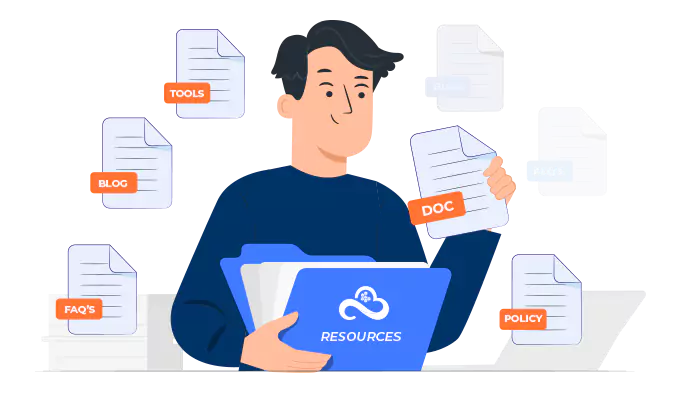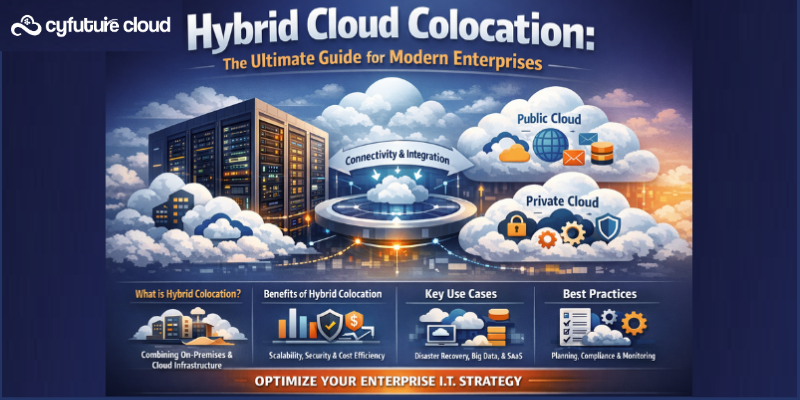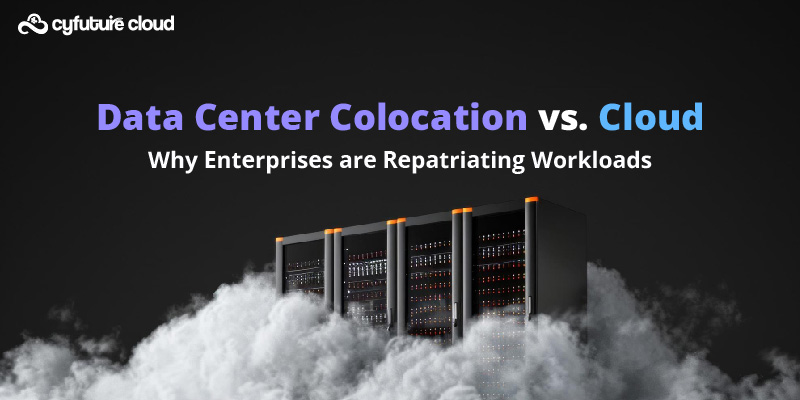Get 69% Off on Cloud Hosting : Claim Your Offer Now!
- Products
-
Compute
Compute
- Predefined TemplatesChoose from a library of predefined templates to deploy virtual machines!
- Custom TemplatesUse Cyfuture Cloud custom templates to create new VMs in a cloud computing environment
- Spot Machines/ Machines on Flex ModelAffordable compute instances suitable for batch jobs and fault-tolerant workloads.
- Shielded ComputingProtect enterprise workloads from threats like remote attacks, privilege escalation, and malicious insiders with Shielded Computing
- GPU CloudGet access to graphics processing units (GPUs) through a Cyfuture cloud infrastructure
- vAppsHost applications and services, or create a test or development environment with Cyfuture Cloud vApps, powered by VMware
- Serverless ComputingNo need to worry about provisioning or managing servers, switch to Serverless Computing with Cyfuture Cloud
- HPCHigh-Performance Computing
- BaremetalBare metal refers to a type of cloud computing service that provides access to dedicated physical servers, rather than virtualized servers.
-
Storage
Storage
- Standard StorageGet access to low-latency access to data and a high level of reliability with Cyfuture Cloud standard storage service
- Nearline StorageStore data at a lower cost without compromising on the level of availability with Nearline
- Coldline StorageStore infrequently used data at low cost with Cyfuture Cloud coldline storage
- Archival StorageStore data in a long-term, durable manner with Cyfuture Cloud archival storage service
-
Database
Database
- MS SQLStore and manage a wide range of applications with Cyfuture Cloud MS SQL
- MariaDBStore and manage data with the cloud with enhanced speed and reliability
- MongoDBNow, store and manage large amounts of data in the cloud with Cyfuture Cloud MongoDB
- Redis CacheStore and retrieve large amounts of data quickly with Cyfuture Cloud Redis Cache
-
Automation
Automation
-
Containers
Containers
- KubernetesNow deploy and manage your applications more efficiently and effectively with the Cyfuture Cloud Kubernetes service
- MicroservicesDesign a cloud application that is multilingual, easily scalable, easy to maintain and deploy, highly available, and minimizes failures using Cyfuture Cloud microservices
-
Operations
Operations
- Real-time Monitoring & Logging ServicesMonitor & track the performance of your applications with real-time monitoring & logging services offered by Cyfuture Cloud
- Infra-maintenance & OptimizationEnsure that your organization is functioning properly with Cyfuture Cloud
- Application Performance ServiceOptimize the performance of your applications over cloud with us
- Database Performance ServiceOptimize the performance of databases over the cloud with us
- Security Managed ServiceProtect your systems and data from security threats with us!
- Back-up As a ServiceStore and manage backups of data in the cloud with Cyfuture Cloud Backup as a Service
- Data Back-up & RestoreStore and manage backups of your data in the cloud with us
- Remote Back-upStore and manage backups in the cloud with remote backup service with Cyfuture Cloud
- Disaster RecoveryStore copies of your data and applications in the cloud and use them to recover in the event of a disaster with the disaster recovery service offered by us
-
Networking
Networking
- Load BalancerEnsure that applications deployed across cloud environments are available, secure, and responsive with an easy, modern approach to load balancing
- Virtual Data CenterNo need to build and maintain a physical data center. It’s time for the virtual data center
- Private LinkPrivate Link is a service offered by Cyfuture Cloud that enables businesses to securely connect their on-premises network to Cyfuture Cloud's network over a private network connection
- Private CircuitGain a high level of security and privacy with private circuits
- VPN GatewaySecurely connect your on-premises network to our network over the internet with VPN Gateway
- CDNGet high availability and performance by distributing the service spatially relative to end users with CDN
-
Media
-
Analytics
Analytics
-
Security
Security
-
Network Firewall
- DNATTranslate destination IP address when connecting from public IP address to a private IP address with DNAT
- SNATWith SNAT, allow traffic from a private network to go to the internet
- WAFProtect your applications from any malicious activity with Cyfuture Cloud WAF service
- DDoSSave your organization from DoSS attacks with Cyfuture Cloud
- IPS/ IDSMonitor and prevent your cloud-based network & infrastructure with IPS/ IDS service by Cyfuture Cloud
- Anti-Virus & Anti-MalwareProtect your cloud-based network & infrastructure with antivirus and antimalware services by Cyfuture Cloud
- Threat EmulationTest the effectiveness of cloud security system with Cyfuture Cloud threat emulation service
- SIEM & SOARMonitor and respond to security threats with SIEM & SOAR services offered by Cyfuture Cloud
- Multi-Factor AuthenticationNow provide an additional layer of security to prevent unauthorized users from accessing your cloud account, even when the password has been stolen!
- SSLSecure data transmission over web browsers with SSL service offered by Cyfuture Cloud
- Threat Detection/ Zero DayThreat detection and zero-day protection are security features that are offered by Cyfuture Cloud as a part of its security offerings
- Vulnerability AssesmentIdentify and analyze vulnerabilities and weaknesses with the Vulnerability Assessment service offered by Cyfuture Cloud
- Penetration TestingIdentify and analyze vulnerabilities and weaknesses with the Penetration Testing service offered by Cyfuture Cloud
- Cloud Key ManagementSecure storage, management, and use of cryptographic keys within a cloud environment with Cloud Key Management
- Cloud Security Posture Management serviceWith Cyfuture Cloud, you get continuous cloud security improvements and adaptations to reduce the chances of successful attacks
- Managed HSMProtect sensitive data and meet regulatory requirements for secure data storage and processing.
- Zero TrustEnsure complete security of network connections and devices over the cloud with Zero Trust Service
- IdentityManage and control access to their network resources and applications for your business with Identity service by Cyfuture Cloud
-
-
Compute
- Solutions
-
Solutions
Solutions
-
 Cloud
Hosting
Cloud
Hosting
-
 VPS
Hosting
VPS
Hosting
-
GPU Cloud
-
 Dedicated
Server
Dedicated
Server
-
 Server
Colocation
Server
Colocation
-
 Backup as a Service
Backup as a Service
-
 CDN
Network
CDN
Network
-
 Window
Cloud Hosting
Window
Cloud Hosting
-
 Linux
Cloud Hosting
Linux
Cloud Hosting
-
Managed Cloud Service
-
Storage as a Service
-
 VMware
Public Cloud
VMware
Public Cloud
-
 Multi-Cloud
Hosting
Multi-Cloud
Hosting
-
 Cloud
Server Hosting
Cloud
Server Hosting
-
 Bare
Metal Server
Bare
Metal Server
-
 Virtual
Machine
Virtual
Machine
-
 Magento
Hosting
Magento
Hosting
-
Remote Backup
-
 DevOps
DevOps
-
 Kubernetes
Kubernetes
-
 Cloud
Storage
Cloud
Storage
-
NVMe Hosting
-
 DR
as s Service
DR
as s Service
-
-
Solutions
- Marketplace
- Pricing
- Resources
- Resources
-
By Product
Use Cases
-
By Industry
- Company
-
Company
Company
-
Company
18 Cloud Cost Optimization Best Practices for 2025
Table of Contents
- The $723 Billion Cloud Dilemma: Why Optimization Is Mission Critical
- Key Cloud Spending Facts for 2025
- 18 Expert Cloud Cost Optimization Best Practices for 2025
- Establish Robust Cloud Cost Governance
- Tag and Organize All Resources
- Rightsize Compute and Storage Resources
- Eliminate Idle and Unused Resources
- Implement Resource Scheduling
- Leverage Auto-Scaling Policies
- Use Reserved and Savings Plans
- Utilize Spot and Preemptible Instances
- Optimize Storage Tiers
- Monitor and Act on Cost Anomalies
- Adopt Serverless and Containerization
- Optimize Licensing and Third-Party SaaS
- Limit Egress and Data Transfer Fees
- Optimize at Each SDLC Stage
- Embrace Multi-Cloud and Hybrid Strategies Cautiously
- Automate Cost Optimization Actions
- Track Spend by Cost Centers and Teams
- Commit to Continuous Audit and Optimization
- Final Thoughts
The $723 Billion Cloud Dilemma: Why Optimization Is Mission Critical
Picture this: You’re in a board meeting, and your CIO drops a bombshell—cloud costs soared by 23% last quarter. As teams scramble for answers, you aren’t alone. In 2025, global spend on public cloud services is set to hit $723.4 billion, with 67% of tech leaders listing cloud cost optimization as their #1 IT priority. Yet, up to 70% of companies still don’t know exactly where their cloud budget is going. For enterprises, that’s not just a loss of capital—it’s a competitive risk.
Cloud is now the backbone of modern enterprises, but its flexibility also makes uncontrolled spending frighteningly easy. As hybrid, AI-driven, and multicloud ecosystems become the new normal, mastering cloud cost optimization has become business-critical, not optional.
Key Cloud Spending Facts for 2025
- Global public cloud spend: $723.4 billion (2025 forecast)
- 51% of enterprise IT spending in key segments has shifted to the cloud
- 33% of organizations spend over $12 million/year on cloud services
- Up to 35% cost reduction is possible with the right optimization strategies
- 78% of companies detect cost variances too late, leading to waste
- 90% can migrate to lower-cost compute with modern architectures
18 Expert Cloud Cost Optimization Best Practices for 2025

18 Best Practices
- Cloud cost governance
- Resource tagging
- Rightsizing
- Removing idle resources
- Scheduling non-prod
- Auto-scaling
- Reserved/savings plans
- Spot/preemptible use
- Tiered storage
- Cost anomaly detection
- Serverless/containers
- SaaS/license optimization
- Limiting data transfer fees
- Cost checks in SDLC
- Strategic multi/hybrid-cloud
- Automation
- Cost center tracking
- Continuous audit
Establish Robust Cloud Cost Governance
Adopt a FinOps culture. Centralize cloud cost monitoring, align IT, finance, and engineering, and set policies for accountability.
Tag and Organize All Resources
Comprehensive tagging by project, department, and business unit enhances visibility, attribution, and insight-driven optimization.
Rightsize Compute and Storage Resources
Regularly analyze usage trends and adjust VM or container sizes to actual needs, avoiding persistent overprovisioning.
Eliminate Idle and Unused Resources
Automated scripts or management tools should regularly flag unused VMs, unattached disks, idle load balancers, and orphaned storage volumes for deletion.
Implement Resource Scheduling
Schedule non-production environments (dev, test, QA) to run only during business hours, saving 60-66% on costs.
Leverage Auto-Scaling Policies
Use predictive or event-based auto-scaling to match resources to demand dynamically, eliminating waste from static provisioning.
Use Reserved and Savings Plans
Commit to 1/3-year reserved or savings plans for baseline workloads to secure discounts of up to 65% vs on-demand rates.
Utilize Spot and Preemptible Instances
Spot/interruptible instances can offer up to 90% savings for stateless, fault-tolerant, or batch workloads.
Optimize Storage Tiers
Move infrequently accessed data to cheaper archival or object storage classes to cut storage bills without losing compliance.
Monitor and Act on Cost Anomalies
Deploy AI-driven tools to detect cost spikes in real time, reducing budget surprises by 20%.
Adopt Serverless and Containerization
Move suitable workloads to serverless or container-based platforms to reduce idle costs—see up to 35% cost reduction here.
Optimize Licensing and Third-Party SaaS
Identify unused licenses, consolidate vendors, and rationalize SaaS subscriptions for cloud-hosted applications.
Limit Egress and Data Transfer Fees
Architect solutions with minimal cross-region or cross-cloud data transfer. Co-locate resources as feasible to avoid hefty egress charges.
Optimize at Each SDLC Stage
Embed cost checks into CI/CD pipelines: test, monitor, and optimize cloud resources at each stage of software development.
Embrace Multi-Cloud and Hybrid Strategies Cautiously
Choose multi-cloud only for business, regulatory, or technical reasons, and invest in consolidated visibility and control tools to prevent redundant spending.
Automate Cost Optimization Actions
Automate with policies and scripts. Examples: auto-delete unattached storage, downsize underutilized instances, shut down dev at night.
Track Spend by Cost Centers and Teams
Allocate costs granularly, enforce budgets, and reward teams that consistently reduce waste.
Commit to Continuous Audit and Optimization
Cloud environments evolve—so should your optimization. Audit frequently, retire legacy architectures, and update governance processes based on trend analysis.
Final Thoughts
Cloud spend is no longer a background line item; it’s a leading indicator of digital maturity and business agility. The challenges of opaque costs and rapidly shifting architectures demand not just reactive cost cutting, but proactive cloud financial operations. Tech leaders who prioritize these 18 best practices position their organizations for sustainable growth—even as cloud platforms and costs continue their exponential climb.
Unlock the real ROI of your cloud—and make your CFO smile in the next board review.
Recent Post

Stay Ahead of the Curve.
Join the Cloud Movement, today!
© Cyfuture, All rights reserved.
Send this to a friend

 Pricing
Calculator
Pricing
Calculator
 Power
Power
 Utilities
Utilities VMware
Private Cloud
VMware
Private Cloud VMware
on AWS
VMware
on AWS VMware
on Azure
VMware
on Azure Service
Level Agreement
Service
Level Agreement 



















